Antioxidant, Anti-Inflammatory, and Analgesic Properties of Chemically Characterized Polyphenol-Rich Extract from Withania adpressa Coss. ex Batt
Abstract
1. Introduction
2. Materials and Methods
2.1. Plant Material
2.2. Extraction of Phenols
2.3. HPLC Analysis
2.4. In Vitro Antioxidant Activity of Polyphenol-Rich Fraction
2.4.1. Antioxidant Power of Polyphenol-Rich Fraction Using DPPH Assay
2.4.2. Total Antioxidant Capacity of Polyphenol-Rich Fraction
2.5. Animal Material
2.6. Anti-Inflammatory Activity
2.7. Analgesic Activity
2.8. Statistical Analysis
3. Results
3.1. Chemical Characterization
3.2. Antioxidant Activity
3.3. Anti-Inflammatory Activity of Polyphenol-Rich Fraction
3.4. Analgesic Activity of Polyphenol-Rich Fraction
4. Conclusions
Funding
Institutional Review Board Statement
Informed Consent Statement
Data Availability Statement
Conflicts of Interest
References
- Bourhia, M.; Elmahdaoui, H.; Moussa, S.I.; Ullah, R.; Bari, A. Potential Natural Dyes Food from the Powder of Prickly Pear Fruit Peels (Opuntia spp.) Growing in the Mediterranean Basin under Climate Stress. BioMed Res. Int. 2020, 2020, 7579430. [Google Scholar] [CrossRef]
- Amrati, F.E.-Z.; Bourhia, M.; Saghrouchni, H.; Slighoua, M.; Grafov, A.; Ullah, R.; Ezzeldin, E.; Mostafa, G.A.; Bari, A.; Ibenmoussa, S. Caralluma europaea (Guss.) NE Br.: Anti-Inflammatory, Antifungal, and Antibacterial Activities against Nosocomial Antibiotic-Resistant Microbes of Chemically Characterized Fractions. Molecules 2021, 26, 636. [Google Scholar] [CrossRef] [PubMed]
- Dillard, C.J.; German, J.B. Phytochemicals: Nutraceuticals and Human Health. J. Sci. Food Agric. 2000, 80, 1744–1756. [Google Scholar] [CrossRef]
- Jain, C.; Khatana, S.; Vijayvergia, R. Bioactivity of Secondary Metabolites of Various Plants: A Review. Int. J. Pharm. Sci. Res. 2019, 10, 494–504. [Google Scholar]
- Leja, K.B.; Czaczyk, K. The Industrial Potential of Herbs and Spices? A Mini Review. Acta Sci. Pol. Technol. Aliment. 2016, 15, 353–365. [Google Scholar] [CrossRef] [PubMed]
- Wu, L.; Hsu, H.-W.; Chen, Y.-C.; Chiu, C.-C.; Lin, Y.-I.; Ho, J.A. Antioxidant and Antiproliferative Activities of Red Pitaya. Food Chem. 2006, 95, 319–327. [Google Scholar] [CrossRef]
- Bourhia, M.; Bari, A.; Ali, S.S.; Benbacer, L. Phytochemistry and Toxicological Assessment of Bryonia dioica Roots Used in North-African Alternative Medicine. Open Chem. 2019, 17, 1403–1411. [Google Scholar] [CrossRef]
- El Fakir, L.; Bouothmany, K.; Alotaibi, A.; Bourhia, M.; Ullah, R.; Zahoor, S.; El Mzibri, M.; Gmouh, S.; Alaoui, T.; Zaid, A. Antioxidant and Understanding the Anticancer Properties in Human Prostate and Breast Cancer Cell Lines of Chemically Characterized Methanol Extract from Berberis hispanica Boiss. & Reut. Appl. Sci. 2021, 11, 3510. [Google Scholar]
- Rossi, R.; Corino, C.; Pastorelli, G.; Durand, P.; Prost, M. Assessment of Antioxidant Activity of Natural Extracts. Ital. J. Anim. Sci. 2009, 8, 655–657. [Google Scholar] [CrossRef]
- Vercellotti, J.R.; St. Angelo, A.J.; Spanier, A.M. Lipid Oxidation in Foods: An Overview. In Lipid Oxidation in Food; American Chemical Society: Washington, DC, USA, 1992. [Google Scholar]
- Bourhia, M.; Elmahdaoui, H.; Ullah, R.; Bari, A.; Benbacer, L. Promising Physical, Physicochemical, and Biochemical Background Contained in Peels of Prickly Pear Fruit Growing under Hard Ecological Conditions in the Mediterranean Countries. BioMed Res. Int. 2019, 2019, 9873146. [Google Scholar] [CrossRef]
- Gautam, R.; Jachak, S.M. Recent Developments in Anti-Inflammatory Natural Products. Med. Res. Rev. 2009, 29, 767–820. [Google Scholar] [CrossRef] [PubMed]
- Woolf, A.D.; Pfleger, B. Burden of Major Musculoskeletal Conditions. Bull. World Health Organ. 2003, 81, 646–656. [Google Scholar] [PubMed]
- Smith, R.J. Therapies for Rheumatoid Arthritis: Hope Springs Eternal. Drug Discov. Today 2005, 23, 1598–1606. [Google Scholar] [CrossRef] [PubMed]
- Salamatullah, A.M. Antioxidant and Antimicrobial Properties of Polyphenolics from Withania adpressa (Coss.) Batt. against Selected Drug-Resistant Bacterial Strains. Open Chem. 2022, 20, 474–483. [Google Scholar] [CrossRef]
- Salamatullah, A.M. Promising Antioxidant and Insecticidal Properties of Chemically Characterized Hydroethanol Extract from Withania adpressa Coss. Ex Batt. Horticulturae 2022, 8, 698. [Google Scholar] [CrossRef]
- Amrati, F.E.-Z.; Bourhia, M.; Slighoua, M.; Boukhira, S.; Ullah, R.; Ezzeldin, E.; Mostafa, G.A.; Grafov, A.; Bousta, D. Protective Effect of Chemically Characterized Polyphenol-Rich Fraction from Apteranthes europaea (Guss.) Murb. subsp. maroccana (Hook. f.) Plowes on Carbon Tetrachloride-Induced Liver Injury in Mice. Appl. Sci. 2021, 11, 554. [Google Scholar] [CrossRef]
- Kumarasamy, Y.; Byres, M.; Cox, P.J.; Jaspars, M.; Nahar, L.; Sarker, S.D. Screening Seeds of Some Scottish Plants for Free Radical Scavenging Activity. Phytother. Res. 2007, 21, 615–621. [Google Scholar] [CrossRef]
- Prieto, P.; Pineda, M.; Aguilar, M. Spectrophotometric Quantitation of Antioxidant Capacity through the Formation of a Phosphomolybdenum Complex: Specific Application to the Determination of Vitamin E. Anal. Biochem. 1999, 269, 337–341. [Google Scholar] [CrossRef]
- Bourhia, M.; Haj Said, A.A.; Chaanoun, A.; El Gueddari, F.; Naamane, A.; Benbacer, L.; Khlil, N. Phytochemical Screening and Toxicological Study of Aristolochia baetica Linn Roots: Histopathological and Biochemical Evidence. J. Toxicol. 2019, 2019, 8203832. [Google Scholar] [CrossRef]
- Jain, R.; Kachhwaha, S.; Kothari, S. Phytochemistry, Pharmacology, and Biotechnology of Withania somnifera and Withania coagulans: A Review. J. Med. Plants Res. 2012, 6, 5388–5399. [Google Scholar]
- Matsuda, H.; Murakami, T.; Kishi, A.; Yoshikawa, M. Structures of Withanosides I, II, III, IV, V, VI, and VII, New Withanolide Glycosides, from the Roots of Indian Withania somnifera DUNAL. and Inhibitory Activity for Tachyphylaxis to Clonidine in Isolated Guinea-Pig Ileum. Bioorganic Med. Chem. 2001, 9, 1499–1507. [Google Scholar] [CrossRef] [PubMed]
- Misra, L.; Mishra, P.; Pandey, A.; Sangwan, R.S.; Sangwan, N.S. 1,4-Dioxane and Ergosterol Derivatives from Withania somnifera Roots. J. Asian Nat. Prod. Res. 2012, 14, 39–45. [Google Scholar] [CrossRef] [PubMed]
- Gülçin, I. Antioxidant Activity of Caffeic Acid (3,4-Dihydroxycinnamic Acid). Toxicology 2006, 217, 213–220. [Google Scholar] [CrossRef] [PubMed]
- Jawhari, F.Z.; Moussaoui, A.E.; Bourhia, M.; Imtara, H.; Saghrouchni, H.; Ammor, K.; Ouassou, H.; Elamine, Y.; Ullah, R.; Ezzeldin, E. Anacyclus pyrethrum var. pyrethrum (L.) and Anacyclus pyrethrum var. depressus (Ball) Maire: Correlation between Total Phenolic and Flavonoid Contents with Antioxidant and Antimicrobial Activities of Chemically Characterized Extracts. Plants 2021, 10, 149. [Google Scholar] [CrossRef]
- Katz, D.L.; Doughty, K.; Ali, A. Cocoa and Chocolate in Human Health and Disease. Antioxid. Redox Signal. 2011, 15, 2779. [Google Scholar] [CrossRef]
- El Moussaoui, A.; Jawhari, F.Z.; Almehdi, A.M.; Elmsellem, H.; Fikri Benbrahim, K.; Bousta, D.; Bari, A. Antibacterial, Antifungal and Antioxidant Activity of Total Polyphenols of Withania frutescens L. Bioorganic Chem. 2019, 93, 103337. [Google Scholar] [CrossRef]
- Posadas, I.; Bucci, M.; Roviezzo, F.; Rossi, A.; Parente, L.; Sautebin, L.; Cirino, G. Carrageenan-Induced Mouse Paw Oedema Is Biphasic, Age-Weight Dependent and Displays Differential Nitric Oxide Cyclooxygenase-2 Expression. Br. J. Pharmacol. 2004, 142, 331–338. [Google Scholar] [CrossRef]
- Moussaoui, A.E.; Jawhari, F.Z.; Bourhia, M.; Maliki, I.; Sounni, F.; Mothana, R.A.; Bousta, D.; Bari, A. Withania frutescens: Chemical Characterization, Analgesic, Anti-Inflammatory, and Healing Activities. Open Chem. 2020, 18, 927–935. [Google Scholar] [CrossRef]
- Chatter, R.; Tarhouni, S.; Kharrat, R.R. Criblage de l’effet anti-inflammatoire et analgésique des algues marines de la mer méditerranée. Arch. Inst. Pasteur Tunis 2012, 88, 19–28. [Google Scholar]
- Fiorucci, S.; Meli, R.; Bucci, M.; Cirino, G. Dual Inhibitors of Cyclooxygenase and 5-Lipoxygenase. A New Avenue in Anti-Inflammatory Therapy? Biochem. Pharmacol. 2001, 62, 1433–1438. [Google Scholar] [CrossRef]
- Martel-Pelletier, J.; Lajeunesse, D.; Reboul, P.; Pelletier, J. Therapeutic Role of Dual Inhibitors of 5-LOX and COX, Selective and Non-Selective Non-Steroidal Anti-Inflammatory Drugs. Ann. Rheum. Dis. 2003, 62, 501–509. [Google Scholar] [CrossRef] [PubMed]
- Zomborszki, Z.; Peschel, W.; Boros, K.; Hohmann, J.; Dezső, C. Development of an Optimized Processing Method for Withania frutescens. Acta Aliment. 2016, 45, 452–456. [Google Scholar] [CrossRef]
- Naidoo, D.B.; Chuturgoon, A.A.; Phulukdaree, A.; Guruprasad, K.P.; Satyamoorthy, K.; Sewram, V. Withania somnifera Modulates Cancer Cachexia Associated Inflammatory Cytokines and Cell Death in Leukaemic THP-1 Cells and Peripheral Blood Mononuclear Cells (PBMC’s). BMC Complement. Altern. Med. 2018, 18, 126. [Google Scholar] [CrossRef]
- Saleem, S.; Muhammad, G.; Hussain, M.A.; Altaf, M.; Bukhari, S.N.A. Withania somnifera L.: Insights into the Phytochemical Profile, Therapeutic Potential, Clinical Trials, and Future Prospective. Iran. J. Basic Med. Sci. 2020, 23, 1501–1526. [Google Scholar] [CrossRef] [PubMed]
- Sharifi-Rad, J.; Quispe, C.; Ayatollahi, S.A.; Kobarfard, F.; Staniak, M.; Stępień, A.; Czopek, K.; Sen, S.; Acharya, K.; Matthews, K.R.; et al. Chemical Composition, Biological Activity, and Health-Promoting Effects of Withania somnifera for Pharma-Food Industry Applications. J. Food Qual. 2021, 2021, e8985179. [Google Scholar] [CrossRef]
- Mukherjee, P.K.; Banerjee, S.; Biswas, S.; Das, B.; Kar, A.; Katiyar, C.K. Withania somnifera (L.) Dunal—Modern Perspectives of an Ancient Rasayana from Ayurveda. J. Ethnopharmacol. 2021, 264, 113157. [Google Scholar] [CrossRef]
- Ben Bakrim, W.; El Bouzidi, L.; Nuzillard, J.-M.; Cretton, S.; Saraux, N.; Monteillier, A.; Christen, P.; Cuendet, M.; Bekkouche, K. Bioactive Metabolites from the Leaves of Withania adpressa. Pharm. Biol. 2018, 56, 505–510. [Google Scholar] [CrossRef]
- Kumar, C.U.; Pokuri, V.K.; Pingali, U. Evaluation of the Analgesic Activity of Standardized Aqueous Extract of Terminalia chebula in Healthy Human Participants Using Hot Air Pain Model. J. Clin. Diagn. Res. 2015, 9, FC01–FC04. [Google Scholar] [CrossRef]
- EvanPrince, S.; Sonal, C.; Rasool, M. Evaluation of Analgesic, Antipyretic and Ulcerogenic Effect of Withaferin A. Int. J. Integr. Biol. 2009, 6, 52–56. [Google Scholar]
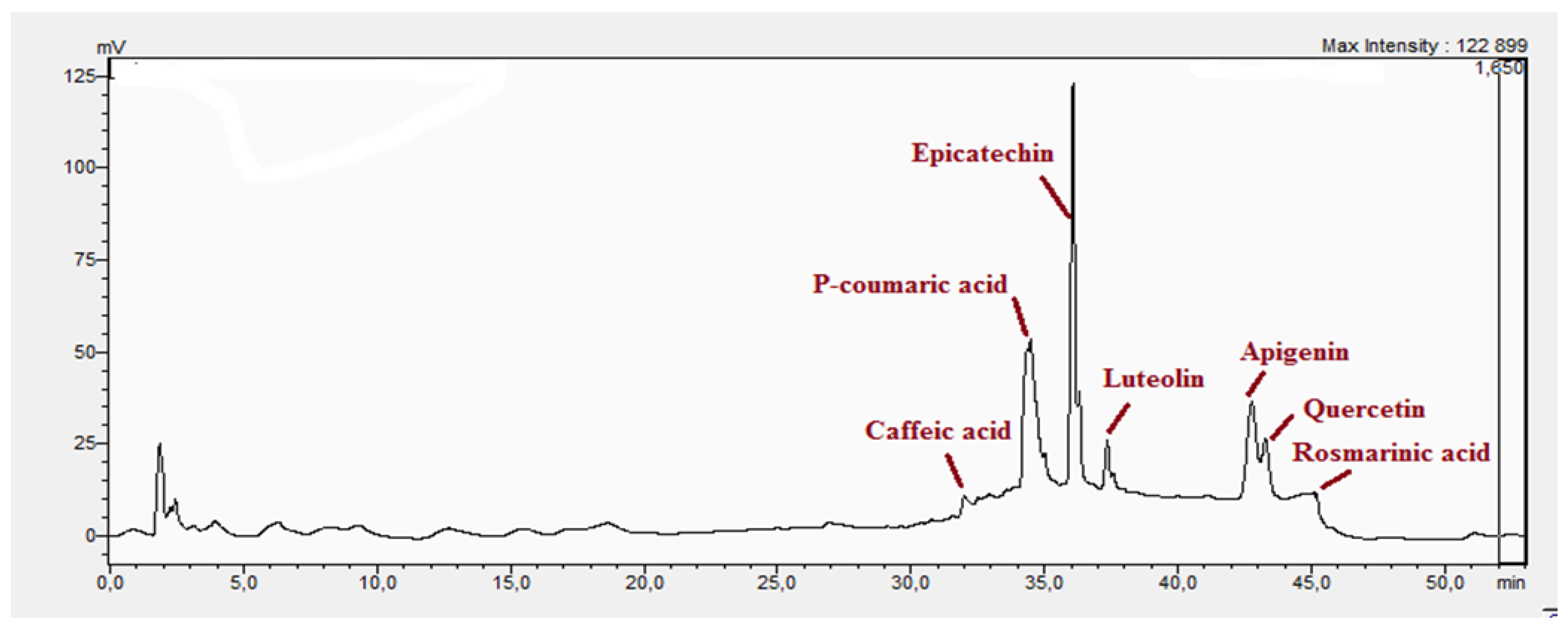

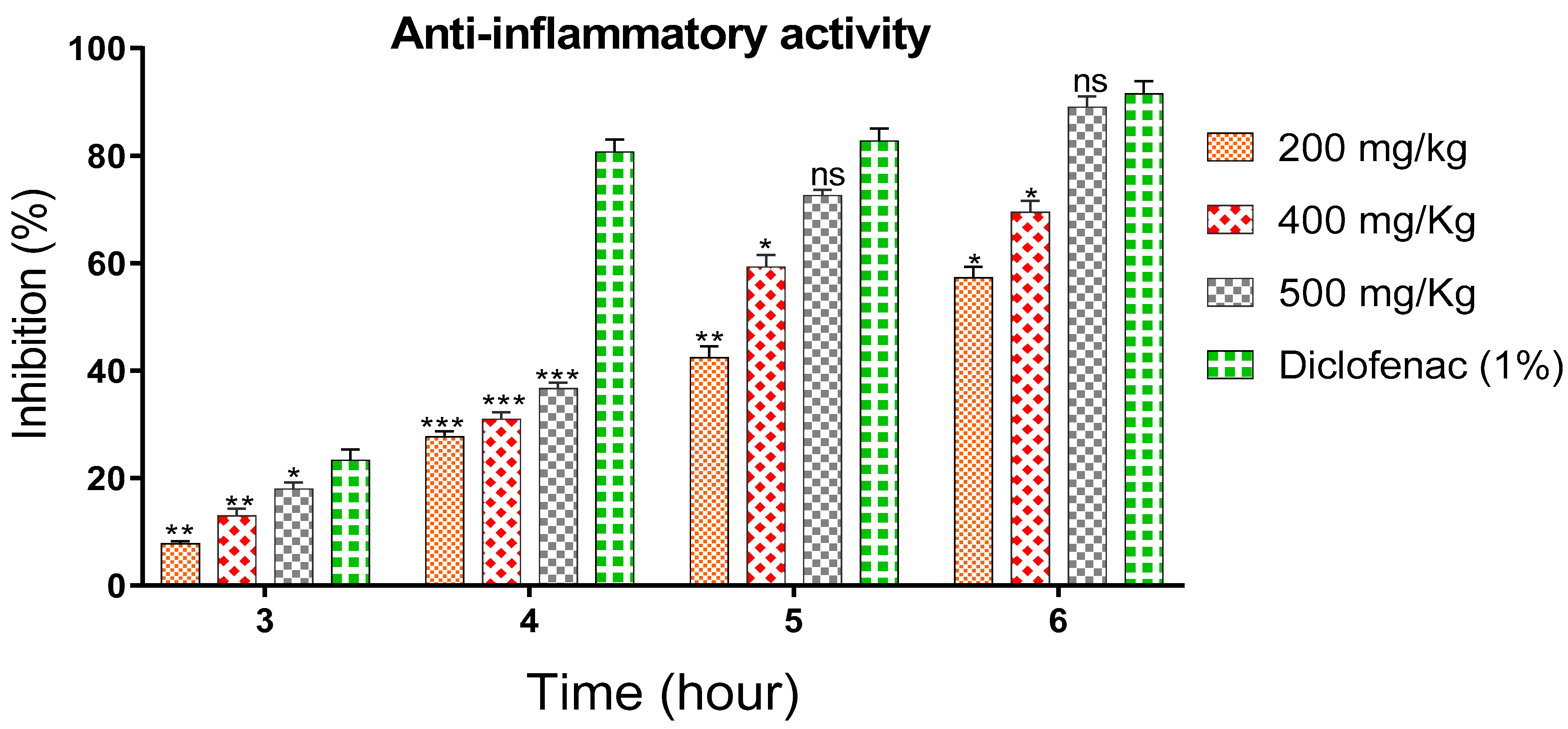
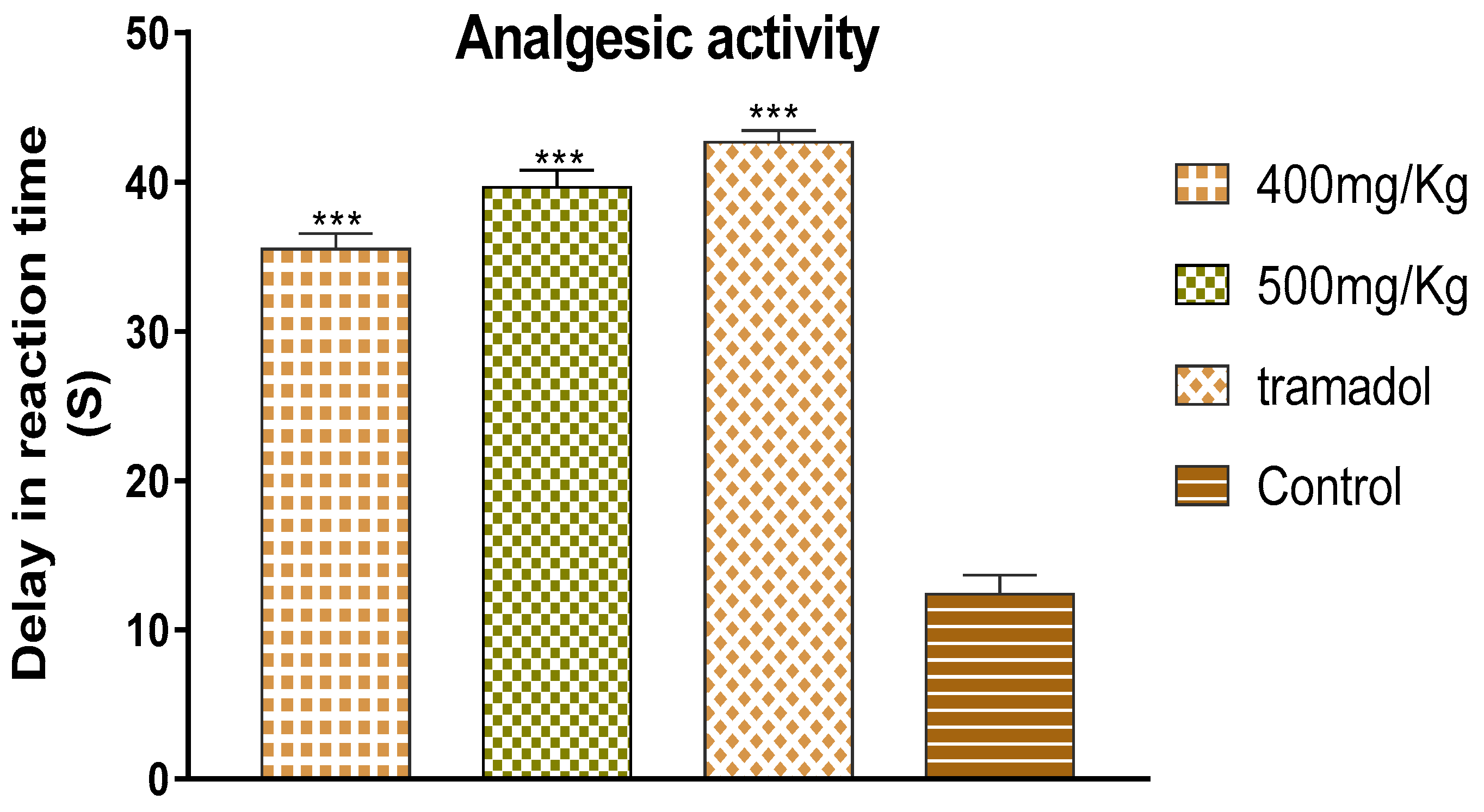
| RT | Identification Compound | Standard Use | Concentration in µg/mg | Molecular Structure |
|---|---|---|---|---|
| 31.91 | Caffeic acid | Cafeic acid | 71.28 |  |
| 34.76 | Coumaric acid | p-coumaric acid | 30.46 | 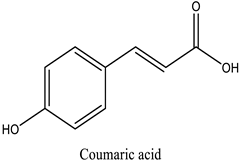 |
| 36.09 | Epicatechin | Epicatechin | 40.53 | 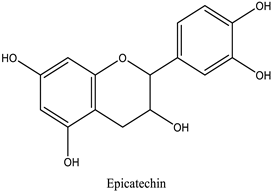 |
| 37.41 | Chrysoeriol-7-diglucuronide | Luteolin | 33.62 | 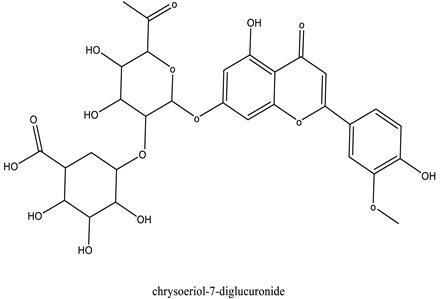 |
| 42.78 | Acacetin-7-diglucuronide | Apigenin | 34.20 |  |
| 43.35 | Quercetin-3-O-glucuronide | Quercetin | 64.25 | 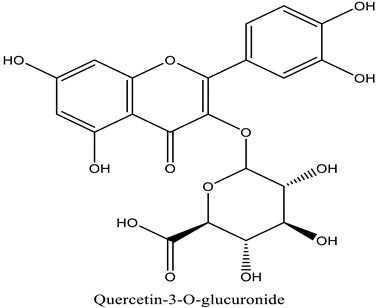 |
| 45.19 | Rosmarinic acid | Rosmarinic acid | 39.81 |  |
| Samples | Anti-Radical Activity by the DPPH Method | IC-50 in µg/mL | ||
|---|---|---|---|---|
| 10 µg/mL | 100 µg/mL | 1000 µg/mL | ||
| Polyphenol-rich fraction | 42% | 72% | 91% | 27.84 ± 1.48 |
| Quercetin | 46% | 87% | 94% | 14.27 ± 0.59 |
| BHT | 48% | 89% | 96% | 13.42 ± 0.87 |
Disclaimer/Publisher’s Note: The statements, opinions and data contained in all publications are solely those of the individual author(s) and contributor(s) and not of MDPI and/or the editor(s). MDPI and/or the editor(s) disclaim responsibility for any injury to people or property resulting from any ideas, methods, instructions or products referred to in the content. |
© 2022 by the author. Licensee MDPI, Basel, Switzerland. This article is an open access article distributed under the terms and conditions of the Creative Commons Attribution (CC BY) license (https://creativecommons.org/licenses/by/4.0/).
Share and Cite
Salamatullah, A.M. Antioxidant, Anti-Inflammatory, and Analgesic Properties of Chemically Characterized Polyphenol-Rich Extract from Withania adpressa Coss. ex Batt. Life 2023, 13, 109. https://doi.org/10.3390/life13010109
Salamatullah AM. Antioxidant, Anti-Inflammatory, and Analgesic Properties of Chemically Characterized Polyphenol-Rich Extract from Withania adpressa Coss. ex Batt. Life. 2023; 13(1):109. https://doi.org/10.3390/life13010109
Chicago/Turabian StyleSalamatullah, Ahmad Mohammad. 2023. "Antioxidant, Anti-Inflammatory, and Analgesic Properties of Chemically Characterized Polyphenol-Rich Extract from Withania adpressa Coss. ex Batt" Life 13, no. 1: 109. https://doi.org/10.3390/life13010109
APA StyleSalamatullah, A. M. (2023). Antioxidant, Anti-Inflammatory, and Analgesic Properties of Chemically Characterized Polyphenol-Rich Extract from Withania adpressa Coss. ex Batt. Life, 13(1), 109. https://doi.org/10.3390/life13010109









